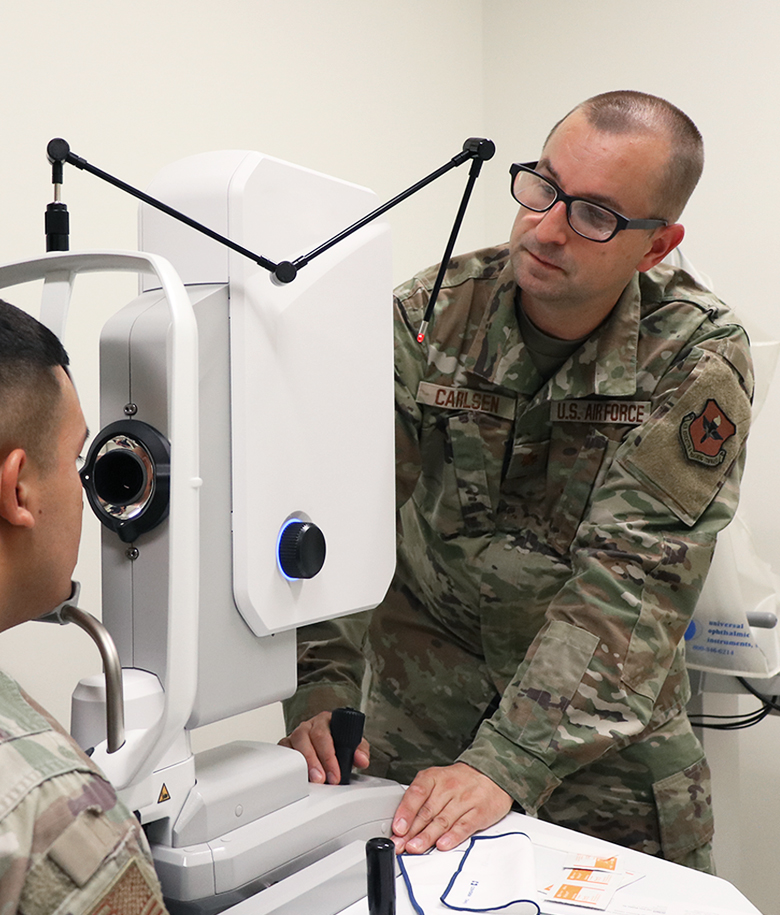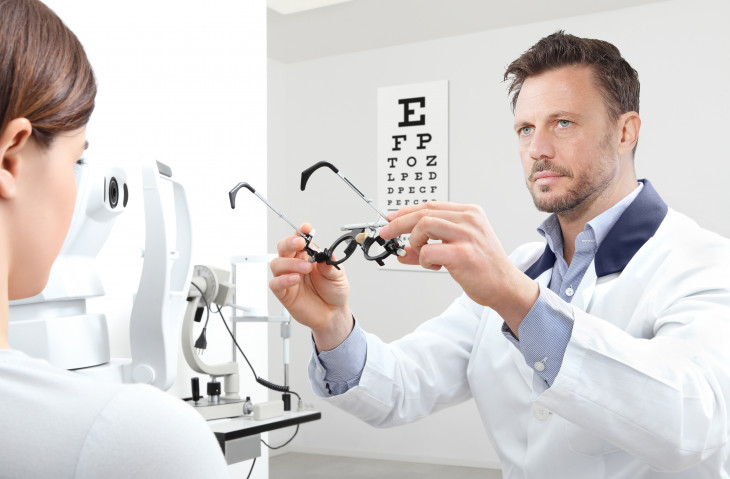Why Choosing an Eye Doctor Optometrist is Important for Your Eyes
Why Choosing an Eye Doctor Optometrist is Important for Your Eyes
Blog Article
Checking Out the Latest Technical Advancements in Optometry and What They Mean for Eye Doctors
In the ever-evolving field of optometry, current technical advancements are improving just how practitioners come close to eye treatment. From the precision of Optical Comprehensibility Tomography to the nuanced understandings offered by AI-driven diagnostic devices, these developments are establishing new requirements in person assessment and treatment. Teleoptometry is poised to redefine availability, making certain that expertise goes beyond geographical limitations. As these developments permeate the practice, eye doctors are confronted with the challenge of accepting these tools to improve person results. Yet, the concern stays: how will these technological changes redefine the functions and obligations within the occupation?
Technologies in Diagnostic Tools
Advancing the area of optometry, technologies in diagnostic devices have actually transformed the method eye care professionals evaluate and detect visual problems and ocular conditions. The past years has actually witnessed significant technical advancements, allowing even more precise and extensive examinations.
Another secret advancement is the introduction of innovative corneal topography systems, which map the surface curvature of the cornea with precision. These devices are especially valuable for suitable contact lenses and detecting corneal disorders. Furthermore, electronic retinal imaging has transformed conventional ophthalmoscopy, using detailed, panoramic views of the retina that help with detailed aesthetic exams.
The growth of wavefront aberrometry has actually also been essential, allowing the analysis of refractive mistakes with unparalleled precision (Optometrist Chino). This innovation helps in personalizing corrective lenses and improving surgical outcomes for refractive surgical treatments. Jointly, these diagnostic innovations equip optometrists to provide exceptional client care, making certain early intervention and customized treatment methods, ultimately enhancing visual wellness results
AI in Person Management
Structure on the foundation of cutting-edge analysis tools, the incorporation of expert system (AI) in individual administration represents a transformative leap for optometry. AI systems are increasingly utilized to enhance efficiency, accuracy, and personalization in person treatment. By examining huge amounts of information, AI can determine patterns and predict prospective ocular conditions, making it possible for eye doctors to customize treatments better. This ability is vital in taking care of persistent eye illness such as glaucoma and diabetic retinopathy, where early detection and continuous tracking are vital.
Moreover, AI-driven systems help with structured patient communications and administrative procedures. Automated scheduling, online assessments, and personalized follow-up plans not just improve person contentment but likewise maximize time monitoring for professionals. These systems can triage people based upon the necessity of their conditions, making sure that those in important demand obtain timely interest.
Moreover, AI enhances decision-making by giving eye doctors with evidence-based recommendations and therapy pathways. By incorporating data from digital wellness documents, AI devices offer insights that notify medical decisions, lowering the risk of mistakes and improving client outcomes. As AI continues to advance, its role in individual administration will likely expand, improving the landscape of optometric care.
Breakthroughs in Retinal Imaging
In the world of optometry, retinal imaging has actually observed amazing technical innovations that are boosting analysis capacities and person treatment. Developments such as Optical Coherence Tomography (OCT) and fundus digital photography have changed how optometrists evaluate the retina and visualize.
Boosted imaging methods like OCT angiography are further refining diagnostic accuracy. Eye Doctor. Such advancements promote the identification of min retinal adjustments that might symbolize illness development.
Moreover, advancements in fabricated intelligence are enhancing retinal imaging by enabling automatic evaluation of large datasets. These systems assist eye doctors in determining patterns a measure of pathology, thereby improving analysis precision and efficiency. Jointly, these innovations are changing retinal imaging right into a foundation of modern-day eye treatment, boosting results and expanding healing opportunities.
Teleoptometry's Growing Role
Teleoptometry is increasingly becoming a vital part of eye treatment, driven by developments in data and analysis tools. As optometry accepts electronic transformation, teleoptometry assists in remote assessments, enabling eye doctors to expand their solutions beyond standard borders. This is particularly helpful in rural and underserved locations where accessibility to specialized eye care is commonly restricted. By leveraging high-resolution video clip conferencing and progressed retinal imaging, optometrists can perform extensive eye examinations from afar, making certain timely diagnosis and treatment.
The combination of expert system (AI) additional improves teleoptometry, allowing the analysis of aesthetic information and assisting in the discovery of eye conditions such as glaucoma and diabetic person retinopathy. AI-powered formulas can quickly interpret intricate imaging information, giving eye doctors with useful understandings that boost scientific decision-making.
Furthermore, teleoptometry sustains connection of treatment via seamless integration with digital health records (EHRs), enabling optometrists to maintain thorough individual backgrounds. This makes certain that patients obtain tailored and regular treatment also when consulting with different practitioners.
Despite these benefits, challenges stay, including guaranteeing information protection and managing client expectations. Teleoptometry represents a considerable stride in the direction of more available, effective, and patient-centered eye care. As innovation advances, its duty is positioned to expand further.

Future Patterns in Eye Care
A myriad of innovative fads is set to reshape the future of eye treatment, driven by technological innovations anonymous and the progressing needs of people. One substantial fad is the integration of synthetic knowledge (AI) in diagnostics, which guarantees to enhance the precision and effectiveness of eye exams. AI algorithms can assess large amounts of data from retinal photos, possibly identifying conditions like diabetic person retinopathy and glaucoma earlier than traditional techniques.
Additionally, individualized medication is obtaining traction in optometry, with hereditary screening educating tailored therapy plans. This method aims to enhance individual end results by customizing interventions to specific hereditary profiles. Wearable innovation, such as smart contact lenses, is likewise coming up, offering real-time tracking of intraocular stress or glucose levels, hence offering continuous insights right into ocular and systemic health and click reference wellness.
The fostering of increased reality (AR) and online reality (VIRTUAL REALITY) in training and patient education is one more emerging fad. These technologies use immersive experiences that can boost understanding and skills both for optometrists and clients. As these fads evolve, eye doctors need to remain abreast of technical advancements to give innovative care, ensuring improved person outcomes and complete satisfaction in the dynamic landscape of eye treatment.
Final Thought

Jointly, these analysis improvements equip optometrists to supply premium individual treatment, ensuring early intervention and tailored treatment approaches, ultimately boosting aesthetic wellness results.

As these modern technologies continue to develop, eye doctors have to adapt and integrate them right into practice, ultimately enhancing operations efficiency and raising the criterion of eye treatment delivered to clients.
Report this page